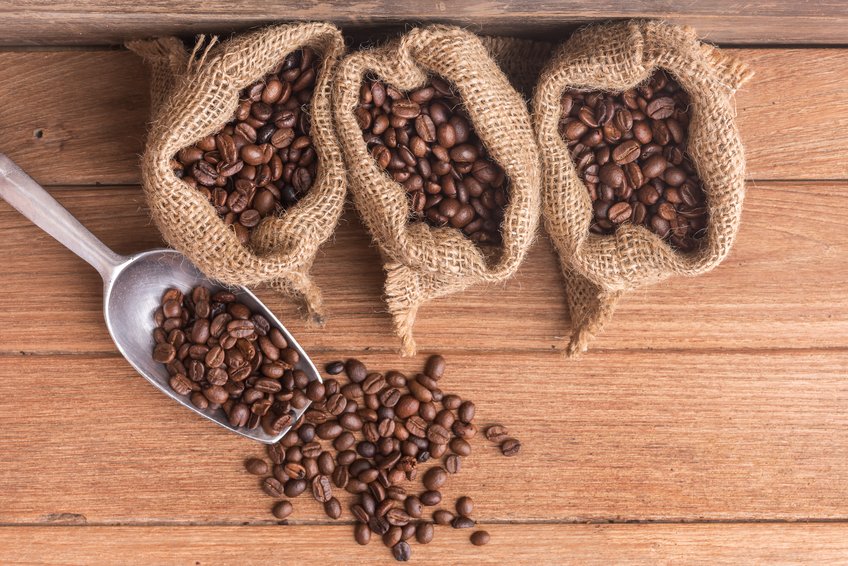My name is James and I look after the Stores here at Lantern Club. Recently I was very fortunate to be given the opportunity to join the ONA Coffee & Project Origin teams, Mingara Groups’ speciality coffee supplier, on their trip to Honduras in Central America to be a part of the Honduras Late Harvest 2018 Auction. I learnt and experienced an extraordinary amount in just one week and though just scratching the surface I would to share some of it with you.
ONA Coffee’s Project Origin
Project Origin was founded by Sasa Sectic who is also the founder of ONA Coffee whom Mingara Group and the Lantern Club are proudly supplied for, providing us and our customers with excellent coffee. Project Origin focuses on the idea of farm to cup, creating a flow through of knowledge and community to help with sustainability, quality and to grow relationships with the farmers. The Honduras Late Harvest auction is one example of this, offering farmers an opportunity to have their speciality coffee judged, rated and then bid on internationally. The process allows cuppers, roasters and educators to help farmers understand what makes great coffee and how to avoid defects that could detract from their product. This also presented an opportunity for farmers to discuss topics like defects and processing techniques with people tasting and accessing their coffee.
The auction also allows farmers to get a much better price for their speciality coffee that without it may end up sold on to big distributers for a standard and lower rate. More money to the farmers means they can support their families and their farms, hopefully improving their resources to produce coffee and pass on their farms to their families. With 90% of the coffee from Honduras produced being speciality beans, coffee is a massive industry for Honduras that creates a lot of jobs and is important to the people who live there.
What is Coffee Cupping?
Cupping is the way coffee aroma and taste is evaluated. It’s done at all sorts of levels in the coffee world from judging at auctions such as this one, to roasters ensuring quality of roast and by consumers interested in delving into the details of a coffee. At this cupping, the green beans provided by roasters were all carefully roasted to a precise consistency then ground.
From there, they were distributed to tables with each coffee numbered 1 – 10. The idea is to blindly judge each coffee with no idea of coffee variety or producer. The coffee was smelled for dry aroma then hot water was added and a timer set. From there the “crust” of coffee on the top was broken to smell the aroma and the floating residue spooned off. Once the coffee is at a temperature that the cupper can tolerate, they begin slurping up small spoonfuls of coffee and tasting.
Coffee was judged on many factors including sweetness, acidity and flavour. Tasting the coffee like this and with focus you begin to hone in on the flavours that make it up. One might find citric acidity or malic which is more tart green apple with floral notes like hibiscus or rich notes like vanilla, chocolate and almonds. On one day we tasted 38 unique coffees and focus was required as you are grading and rating the hard work from many producers. Over multiple days of tasting, they are all given scores and the top 10 are selected, which in term are blindly cupped again to decide their final scores and the champion of the auction.


IHCAFE & The Cupping School
This is the compound we stayed at run by IHCAFE. Located in Santa Barbara, it features accommodation, a cupping school (that takes three years to graduate), a massive hall for cupping and presentations, coffee processing equipment for demonstration and a research centre with green houses too. They receive money from farmers and distributers from coffee export sales. They use this money to fund education and resources for farmers as well as funding research into coffee plant disease prevention, such as growing new resistant coffee plant varieties.
Honduras suffered massive loss of coffee plants only a few years ago due to multiple diseases such as Coffee Leaf Rust, with entire crops being wiped out from farms and they are only now recovering. This makes the work of IHCAFE ever more important. Many people volunteer their time working with IHCAFE simply for the love of Honduras coffee and a passion to help it succeed and thrive. They all have regular jobs, so they are making time for IHCAFE work on top of it. The week we spent there was not just a week spent absorbed in coffee, for many locals it was time away from their day jobs.
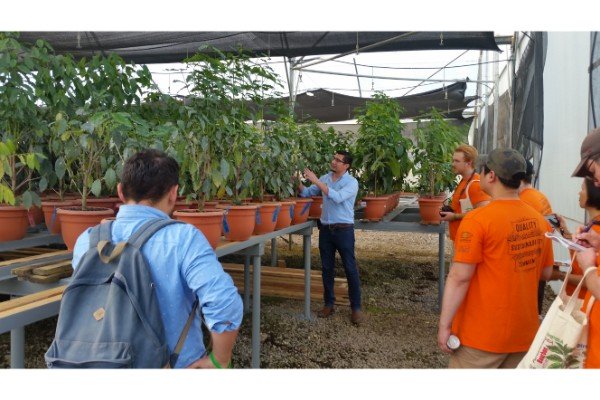
Coffee farming
This is the owner of one of the four farms we visited in Honduras, Don Beningo. While meeting the farmer and being taken around his beautiful farm was initially amazing and otherworldly, it would be made truly special when after rounds of blind coffee cupping he would be declared the champion of the 2018 Honduras Late Harvest Auction. In the photo below you can see his stunned face as he was so overwhelmed by the achievement. His coffee farm was wiped out a few years back and he considered selling his land for very little money. Convinced by coffee locals in the community to try and plant speciality coffee, he would go on to win the auction and have his coffee bid on by buyers from all over the world. It was truly a special moment for everyone at the auction that will stay with a lot of people, myself included.
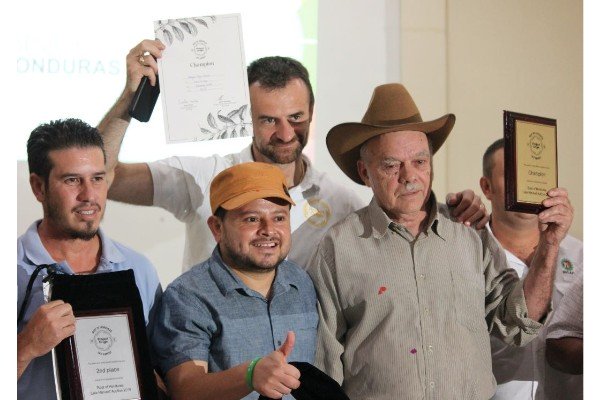
Below are two of the farms we visited, side by side, one of which would win the auction. We took four-wheel-drives up dirt roads snaking their way up the mountain. The roads themselves are the work of the farmers, creating a long winding road to have their coffee transported back down to the city for sales or processing. You can see how mountainous Honduras is with constant peaks and troughs. This creates endless unique microclimates within a short walk of each other with different soil and weather conditions, translating to a wide variety in coffee. This is one of the reasons 90% of Honduras coffee is speciality coffee. Honduras is very environmentally focused, so they have many laws around cutting down trees and vegetation. It’s important to preserve and protect the environment where coffee grows to ensure its long term sustainability as an industry, as well as preserving Honduras’ natural beauty.
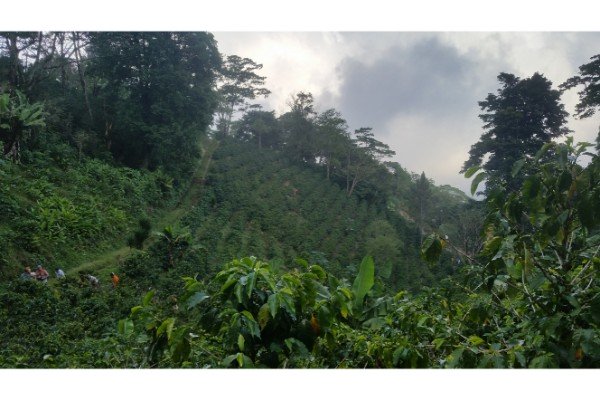
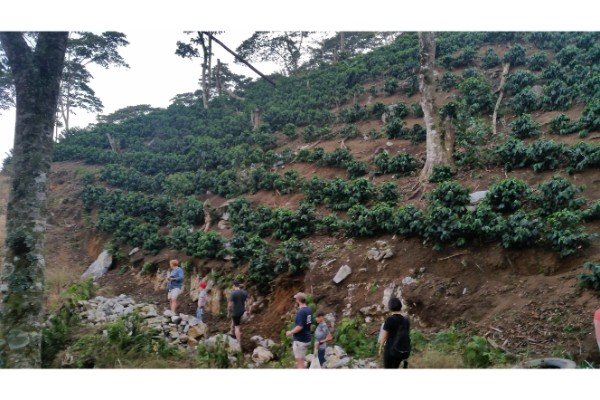
Farms are often 1300 – 1600 metres above sea level with coffee being grown even as high as 1900 metres. The higher the altitude, the slower the plants mature but hopefully the greater the harvest. While it’s hot and humid in the lower parts of Honduras, up here the air is crisp, cool and clean. You can see rows of coffee trees with green coffee cherries which will ripen to red and then be harvested and processed. Harvesting has to be done multiple times as the cherries mature at different rates and each worker picks massive amounts of cherries which they carry on their backs down to the processing area. It’s hard work as it’s often raining and slippery. In the end, a pound of cherries equates to enough beans for just three shots of espresso. There are multiple ways to process the coffee beans and all must be done carefully to prevent ruining the harvest with the green beans being inspected for defects to maintain a good quality.
The trees themselves can suffer frost damage, weather damage and disease damage and require regular inspection and maintenance all year round, well before it comes to harvest time. In the end, the farmers at this auction had anywhere from 260 to 1289 pounds of green beans to sell which once bought, will make their way all around the world. These speciality coffees are rare selections that few people will get to taste and being able to taste 38 of them on this trip was a privilege.
When you see all this, it brings an appreciation for great coffee as this is all before the coffee is even roasted and brewed for the customer. Paying $12 for a speciality coffee might seem absurd to some Australians, but when seeing how much work went into getting that coffee into a cup in front of you, it’s without doubt justified as well as a special tasting experience.
Coffee processing
Coffee itself comes from the seeds within cherries that grow on coffee trees and I got to taste the actual ripe red cherries straight from the tree, which don’t have a strong flavour but are quite sweet like sugar syrup. Harvested coffee cherries need to be processed to get the final result of green coffee beans but how they are processed is up to the producer. For instance, wet processing involves placing the cherries into open vats that are filled with water and the unripe cherries will float while the quality cherries will sink. From there, they are stripped of their pulp through a machine and fermented in water or the pulp around the cherry can be left on and without water, fermented in its own natural juices, which is called honey processing.
Fermentation is a process used on many daily consumed products like coffee and cocoa that many would be unaware of and here the process chosen will highlight different aspects of the bean. There is also dry or natural processing where the whole cherries are dried, then hulled later.
The prolonged contact with the fruit can produce funky and unique flavours comparable to a wild yeast in beer making. Recently, Sasa has experimented with a technique called carbonic maceration where the cherries are washed and stripped then placed in containers, pumped with CO2 to remove the oxygen and placed in a climate controlled area for drying. This is a new process which made its mark on the world this year as Project Origin’s Carbonic Macerated Diamond category coffee was used by the 2018 World Barista Champion Agnieska Rojewska (you can watch her winning performance to see true passion for coffee). Depending on the process used, any remaining pulp and the skin of the beans, called parchment, will need to be removed and if not dried, the beans will need to be dried in either long drying beds or in large drying machines for bigger coffee production, aiming for a humidity of about 12%.
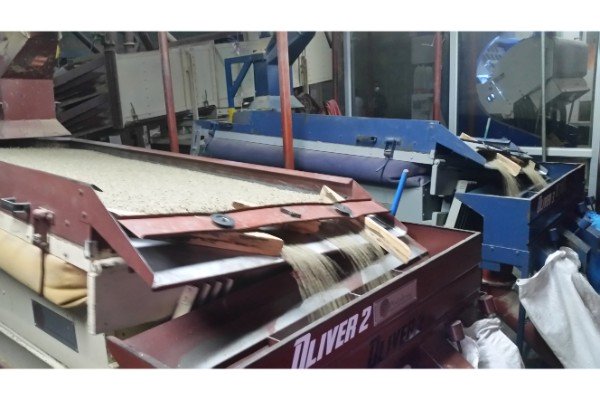
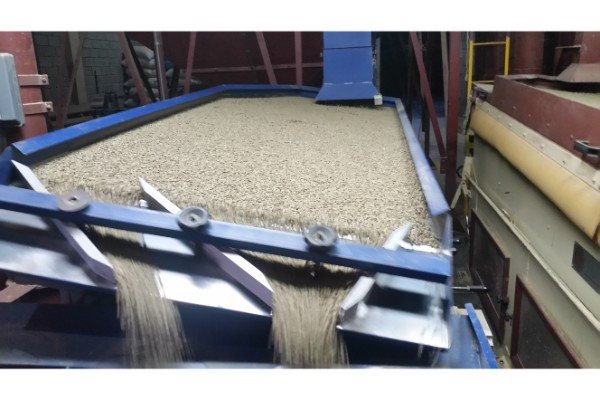
Finca Beti and Finca La Huerta’s Coffee Farms
These photos are of the last two farms we visited and are at around 1600 – 1900ft above sea level. One was Sasa’s farm, Finca Beti, where they are experimenting with different techniques, varietals and altitudes. They lost a lot of crops to frost in January sadly, but when we arrived, the geisha had a mix of green and red cherries and flowers all at the same time. A great example of microclimates affecting the coffee plants.
We hiked through the dense foliage to see these plants nestled amongst trees for shade which were surrounded by dark, rich earth. Sasa bought his land with the help of Jorge Lanza and the Lanza family who own Finca La Huerta next door to Sasa’s farm. Their farm is one of the most beautiful places you could visit with rows of flowers surrounding rows of coffee at an altitude of around 1750ft.
Sasa met Jorge many years ago, tasted his coffee and encouraged him to enter Cup of Excellence which took the gold medal in 2013. They played a massive role in our trip and were amazing people to spend time with.
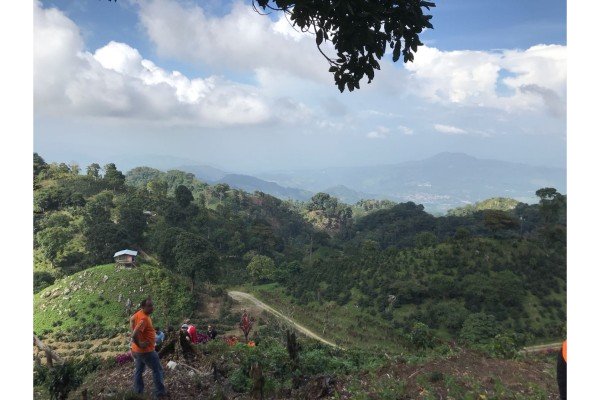
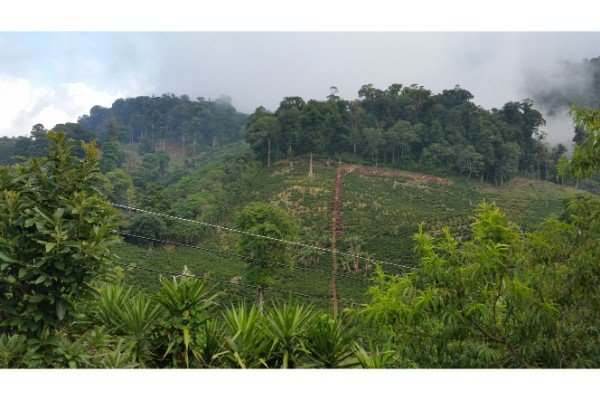
In summary
The tour featured a massive group with people from all over the world, all who play different roles within the coffee industry with a range of skills and experience. A rare opportunity to learn about coffee and experience outstanding coffee. While very new to this world myself, I was surrounded by a wealth of knowledge and passion that was really inspiring and I have taken away great memories.
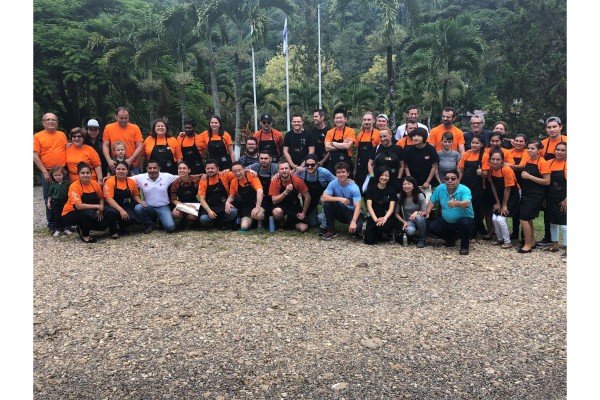
Try an ONA coffee today at MaZi
All the way from the best coffee farms in the world, try one of our delicious coffees today at MàZi. Like me, our specially trained baristas are passionate about making the perfect coffee. We ensure that you won’t find a better coffee anywhere in Canterbury.
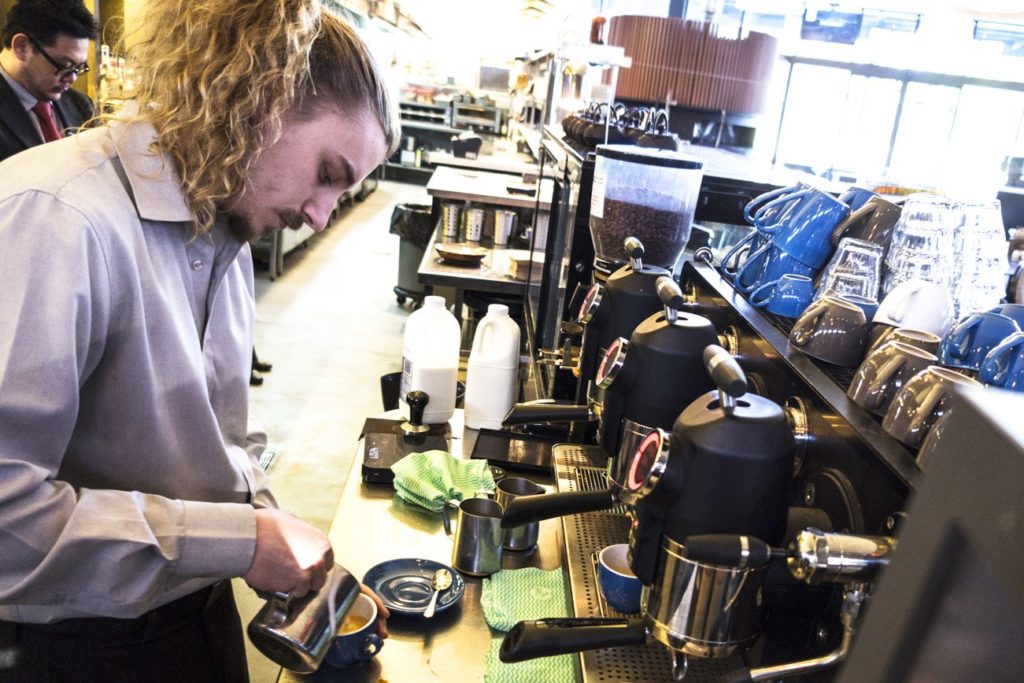
Project Origin
Thank you to Project Origin for supplying photos for this blog. You can see more about the program on Instagram via @ProjectOriginCoffee.

